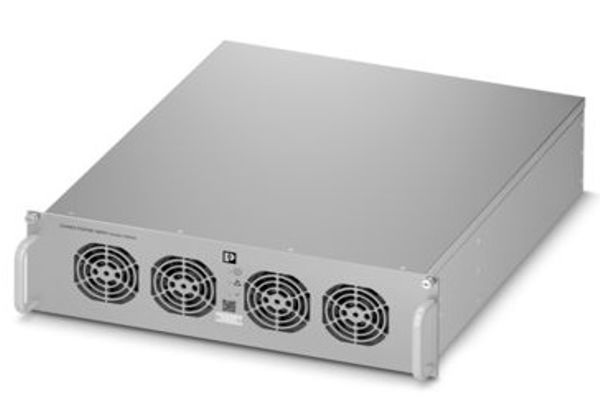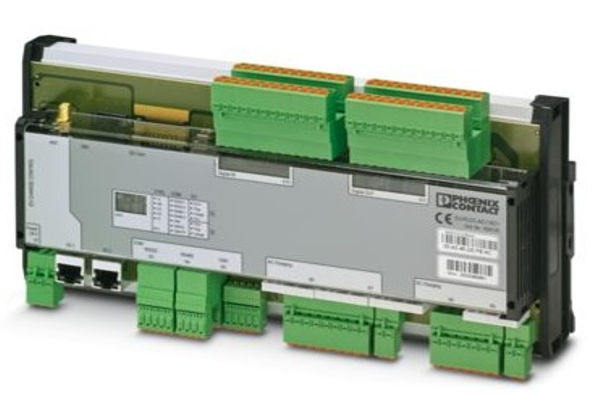– Barley Li, Applications Engineering Manager – Technical Content, APAC.
Drivers of gas-fueled automobiles are increasingly accustomed to driving into service stations and parking lots and spotting electric vehicle (EV) charging stations that are seemingly popping up almost everywhere.
However, to EV drivers on long trips or those on short trips who forgot to top off recently, available charging stations can seem few and far between. That’s an indicator of the increased demand for commercial and industrial products to fulfill the need for convenient EV recharging options.
Building out charging infrastructure is essential to meet government goals for replacing fossil-fueled vehicles with EVs.
Near the end of 2021 in the U.S., the Biden administration announced a strategy to build 500,000 public EV chargers across the country by 2030, and a Department of Energy report indicated that there’s a need for 1.2 million by that time. The UK, China, and the European Union are also subsidizing and promoting investment in public charger infrastructure.
Government incentives and emission restrictions are projected to drive EV sales from 2 million in 2020 to 73 million units in 2040, representing 61% of worldwide car sales and even higher in Japan, the US, and the EU. McKinsey estimates the cost for U.S. public charger hardware, planning, and installation (excluding grid and site electrical upgrades) at $35 billion through 2030, and another $16 billion for those in workplace and fleet depot locations.
Commercial charging solution design
With the number of EVs on the road increasing by the day, the potential market for charging solutions is enormous, as U.S. government estimates for public charging port installations in early 2024 numbered less than 200,000.
It’s expected that demand will increase as consumer confidence in EVs grows with the adoption of High Power Charging (HPS) technology that will deliver approximately 19 miles of driving range per minute of charging. That compares to 2.5 miles per minute of charging with the 200 kW charging currents of the Combined Charging System (CCS) standard.
There are numerous design considerations for commercial and industrial charging solutions, not the least of which is the ability to adapt to evolving EV charging standards. It’s essential that product designers create winning solutions around key characteristics, including:
- Fast and efficient charging for a range of electric vehicles, including cars, buses, and trucks
- Energy efficiency that ensures maximum power is used for charging and minimizes heat loss
- A consistent charging experience, even in the presence of voltage fluctuations
- Long service life and ease of maintenance
- Scalability up to the megawatt range to accommodate the operation of large charging parks and the anticipated growth of EVs on the road
- Safe and reliable operation, with surge protection, circuit breakers, and protection against overheating
Providing fast, convenient, and reliable power to EVs requires product designs that offer high efficiency and flexibility for use in public and commercial/industrial applications.
Modular power supplies for faster EV charging
Phoenix Contact offers modular CHARX power modules that are designed for fast and efficient EV charging. They are also suited for off-highway charging for fleet and heavy equipment, AC microgrids, high-voltage DC grids, energy storage, and hydrogen electrolysis applications.
Founded in Germany in 1923, the company is a worldwide market leader of components, systems, and solutions in electrical engineering, electronics, and automation. It subscribes to the vision of the All Electric Society in which increasing electrification, networking, and automation of sectors goes hand in hand with a growing dependency on reliable power supply solutions. To that end, it is focused on delivering fast, safe, and standard-compliant charging points and charging interfaces with the latest technologies.
Part of a comprehensive product portfolio for building charging solutions, the CHARX power modules (Figure 1) are available in AC/DC and DC/DC versions that can be directly mounted without DIN rails in a standard 19-inch cabinet, commonly used in EV charging stations. The CHARX modular plug-and-play design simplifies and speeds up installation and maintenance processes with push-in and T-LOX fast-connection technology. The module dimensions are 483 mm wide, 134 mm tall, and 550 mm deep.

Optimized for DC charging with high voltages and currents, each power module can provide a charging power up to 360 kW. They provide 95% power efficiency at a 50% load, and low power dissipation under 14 W in standby mode, ensuring cost-effectiveness when not in active use.
Charging power is scalable through the flexible connection of modules and system cabinets. With suitable cooling technology, the CHARX modules enable charging power up to HPC current of as much as 500 kW, ideal for charging parks up to the megawatt range.
The three-phase 1232243 CHARX PS-M2/3AC/1000DC/30KW AC/DC power module has an input range of 340 VAC to 530 VAC. The 1296467 CHARX PS-M2/825DC/1000DC/30KW DC/DC power module has an input range of 300 VDC to 825 VDC for use in numerous DC voltage settings. Both power modules have an output range from 30 VDC to 1,000 VDC.
The DC/DC modules provide continuous maximum power point tracking (MMPT) that adjusts the input voltage and current of a solar array to optimize the output power. This assists in the most efficient output for the device, despite ranging levels of solar radiation, temperature, and PV panel types.
Single controller for multiple cabinets
Effective operation of multiple power modules and cabinets is provided with the Controller Area Network (CAN) bus message-based protocol, enabling inter-device communications without a host computer. The CAN-based Grid Charge Protocol (GCP) provides for communication between one or more power modules and a charging controller, and supports peer-to-peer, multicast, and broadcast communication methods.
The 1624130 EV-PLCC-AC1-DC1 programmable charging controller module (Figure 2) works with either AC/DC or DC/DC power modules for DC charging stations. It is the central component of the electric charging system, providing network communication, user authentication, load management, and safety functions. Its CAN bus interface manages power distribution and communication for fast charging applications.

The controller works in accordance with IEC 61851-1, IEC 61851-23, DIN SPEC 70121, and the CHAdeMO standards, providing versatility for different charging requirements. It includes dual Ethernet interfaces and an integrated wireless modem, including a 4G option.
Utilizing a single controller for several cabinets lowers installation and running expenses while streamlining maintenance. It is possible to connect up to 48 power modules to the CHARX controller. In order to integrate with external systems and platforms, it offers MQTT or Modbus/TCP communication protocols in addition to OCPP 1.6J (Core-Profile) for communication with charging station management systems.
The controller supports 16 digital inputs and utilizes COMBICON connectors for flexible assembly and secure connections to the power modules. Ongoing operation during power interruptions is provided with an integrated, rechargeable battery.
Conclusion
Phoenix Contact’s CHARX power modules and controller provide versatile and reliable options for designing high-power charging stations. With flexibility and scalability, the CHARX product portfolio enables solutions that provide efficient and cost-effective management of multiple cabinets and power modules for different charging applications, as well as seamless integration with different communication protocols and external systems.




